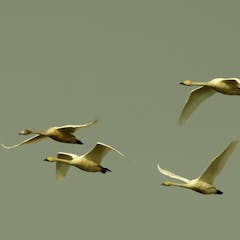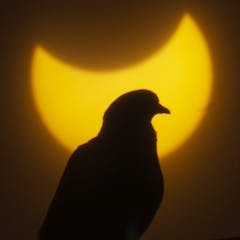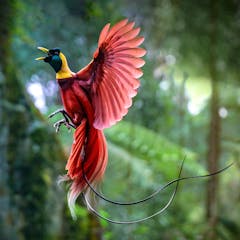
Articles on Birds
Displaying 1 - 20 of 513 articles

These birds are a harbinger of summer – but their arrival, and the seasons, are no longer predictable.

The sad case of the Norfolk Island morepork shows we need a way to control or eradicate invasive rodents without killing native species.

Africa’s hadeda ibises can sense vibrations using a special sensory organ in their beaks. But they need moist soil for it to work.

Wild turkeys were overhunted across the US through the early 1900s, but made a strong comeback. Now, though, numbers are declining again. Two ecologists parse the evidence and offer an explanation.

As climate change threatens their food supply, migratory birds may find help in an unlikely place.

Great tits being studied at a woodland near Oxford are adjusting the timings of their breeding season as the climate changes.

Swifts migrate long distances yet face many threats along their journey. Lack of nest sites is a big problem but installing swift boxes and bricks won’t be the only solution.

In Black Duck, Bruce Pascoe traces a calendar year on Yumburra, the farm his bestseller Dark Emu helped to purchase.

A coastal scientist explains why marshes, mangroves and other wetlands can’t keep up with the effects of climate change, and how human infrastructure is making it harder for them to survive.

Since an eclipse only lasts a few minutes, you need more than just a handful of scientists running around collecting data on bird activity. That’s where a new app comes in.

To truly appreciate the track, it’s important to go beyond the long shadow of the Beatles’ version.

The extinction of the dinosaurs sparked an explosion of bird species, according to the largest-ever study of bird genetics.

Owls, once seen as harbingers of death, are now celebrated in popular literature and culture in North America and Britain.

We scanned the tree canopy with lasers and found birds much prefer the branches of big old trees.

Magpies are expert problem-solvers – but just how good they are seems to depend on the size of the social group they grow up in.

Bird flu is decimating species already threatened by climate change and habitat loss.

If you love learning about dinosaurs don’t let crowdpleasers like the T Rex distract you from the fascinating birdlife that once roamed the Earth.

The experiences of bird safety NGOs show that when trying to achieve environmental goals, being on good terms with stakeholders is important, but direct action can also yield results.

We need every tool at our disposal to stop feral cats and foxes from decimating Australia’s incredible wildlife after fires. Artificial refuges show promise.

The study shows that bird mothers can adjust egg size depending on their social conditions. This counters the idea that, with more help, mothers lay smaller eggs.
